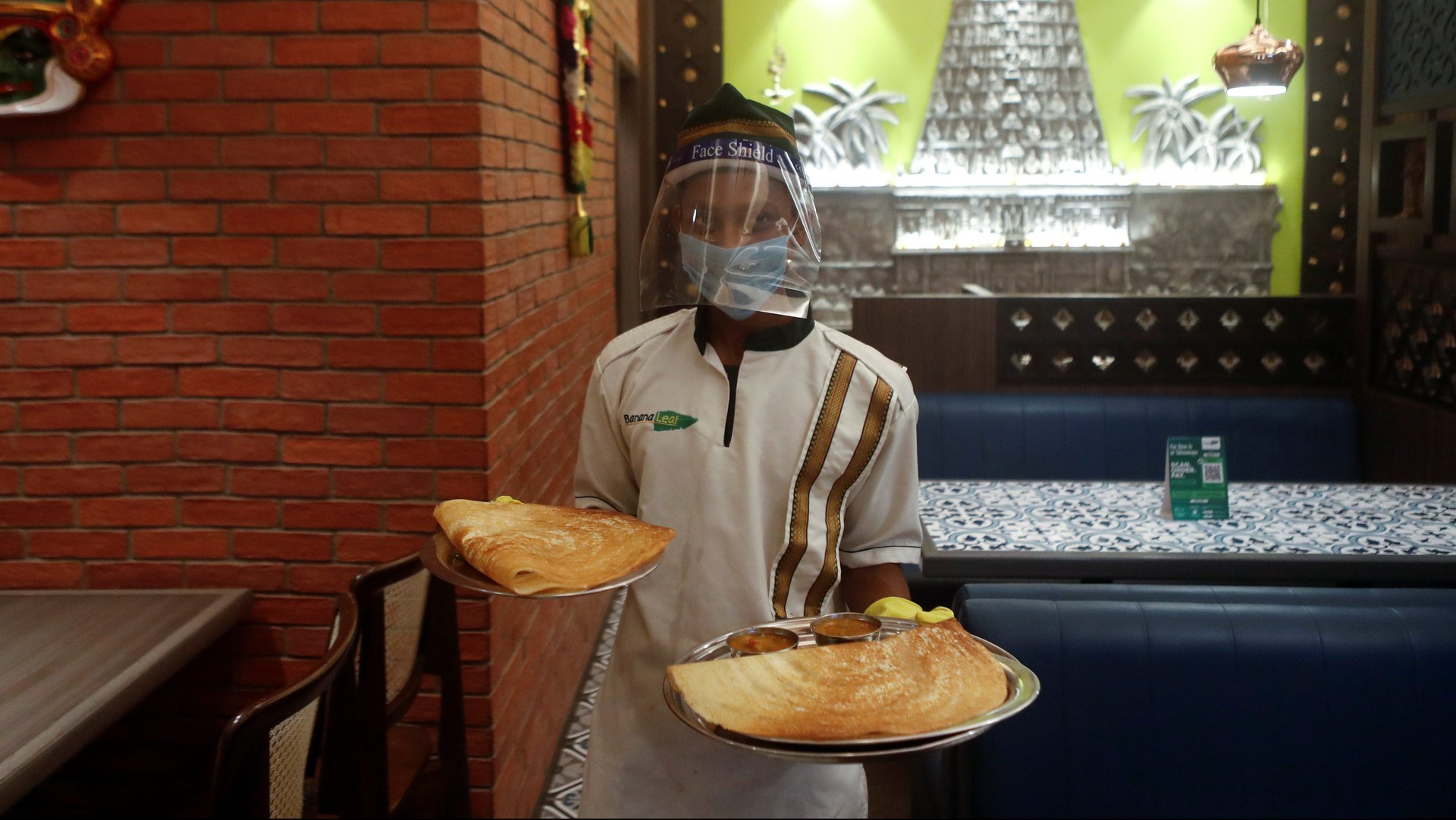Indians haven’t gone back to ordering in like pre-pandemic days
Are Indian food delivery companies lying about their recovery?


Are Indian food delivery companies lying about their recovery?
In October 2020, Zomato and Swiggy, the two leading food delivery firms in India, had said the number of orders booked on their apps had gone back to pre-Covid levels reflecting that Indians were no longer hesitant about ordering-in.
However, independent research has shown that’s not the case. On March 10, market intelligence firm Kalagato said that as per its data, even until December, the two food tech players were inching towards recovery at a snail’s pace.
One plausible explanation for the fall in food-delivery reach is people’s concern for safety and hygiene and a preference for home-cooked meals amid the pandemic, Kalagato noted. Another reason is that given a fall in disposable incomes and job losses, people are not spending on food like earlier, Kalagato ‘s co-founder and CEO Aman Kumar said.
The hesitancy to order reflects in the fact that even though Indians were not ordering as much as before, by December, the number of times they were opening and browsing the apps of Swiggy and Zomato had gone back to pre-lockdown levels.
However, “users who open apps don’t count; paying customers do,” Kalagato noted.
Zomato vs Swiggy vs Domino’s
Comparing Zomato and Swiggy to Domino’s illustrates how monthly active users—share of users who open the app at least once a month—have climbed back up for all but unlike the standalone pizza brand, the two aggregators didn’t see a promising uptick in monthly active customers (MACs), Kalagato data show.
MAC reveals the share of users that open an app at least once a month and transact.
“While we witnessed the demand for food delivery reduce significantly during the initial lockdowns, the recovery in the following months was evidently strong,” a Zomato spokesperson told Quartz. “Further aided by our presence across 500+ cities, stringent focus on safety and hygiene, adequate supply and the subsequent festive season, we are currently doing 120% of pre-COVID GMV with steady week-on-week growth in order volume.”
Loyal customers
While fewer people are placing orders, even those who are, haven’t started spending like before.
“For the sticky users who continue to transact, there hasn’t been much change in how often or how much they order; the lockdown period saw frequency and value hold steady thanks in part to the outlets that remained open for takeaway,” the report noted.
Contrary to the data, Swiggy claims its average order value has risen over 30% since pre-pandemic days because many working professionals moved back home and started ordering for families instead of individuals. Such reverse migration has also made recovery faster in smaller towns.
Beyond food
The last year has shown that food alone isn’t cutting it. Becoming category agnostic is the way forward.
“The uptick in usage towards the end of 2020 for aggregators like Zomato and Swiggy is likely coming from a focus on new categories like alcohol (gives ‘Swiggy’ a whole new meaning!), grocery (Swiggy Instamart moving into Amazon Fresh/BigBasket territory), and wellness products,” Kalagato noted.
To continue innovating while fighting off a backlash from small restaurants, the two giants need more firepower. That’s probably why they spent the better part of 2020 filling their coffers. Zomato picked up over $1.2 billion in four funding rounds between September 2020 and now and is apparently eyeing an IPO sometime this year. Swiggy raised around $150 million last year and is reportedly close to bagging a $700 million round.
Moreover, the fight will only intensify now that trillion-dollar Amazon has entered India’s food-delivery ring.